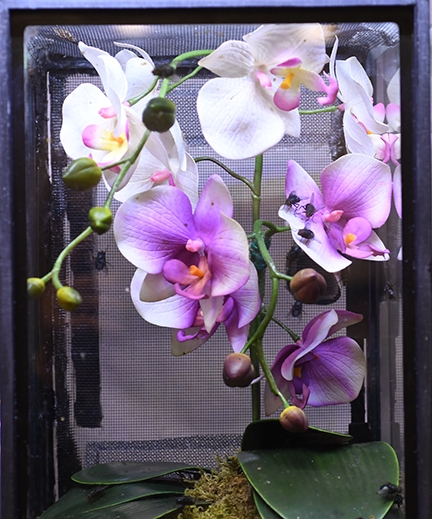
She just wasn't that hungry.
To take it from the top:
The family craft activity at the Bohart's recent open house featured maggot art, in which youths dip a maggot into non-toxic, water-based paint and let it crawl--or guide it--on a piece of paper. Voila! Maggot art! A Picasso or Van Gogh suitable for framing? Well, not quite, but it's quite the conversation piece.
All was fine and good until an orchid praying mantis, a resident of the Bohart's live petting zoo, declined to eat all the leftovers. When she deposited her egg case or ootheca, and she expired, part of her dinner remained.
The result: maggots do what maggots do. They emerged as blow flies.
For a week, visitors ambled by and peered into the orchid-adorned habitat, expecting to see something special.
"What's that?" they asked.
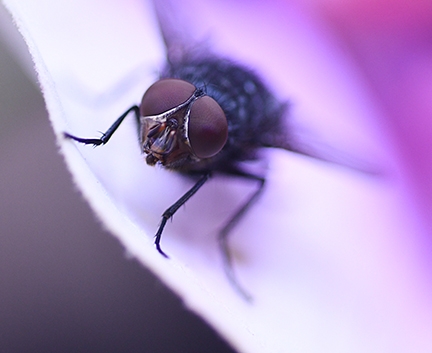
Some escapees flew into the office of research entomologist Tom Zavortink.
"Why," he asked, "is there a blow fly flying around my office?"
"The praying mantis didn't eat all her dinner."
The blow flies are gone now, but you, too, can do maggot art. Mark your calendar for Saturday, April 13 when UC Davis hosts its 105th Annual Picnic Day. The annual maggot art activity, hosted by the UC Davis Department of Entomology and Nematology and the Entomology Graduate Student Association, takes place in Briggs Hall, off Kleiber Hall Drive. Picnic Day organizers invite visitors to "experience the richness of diversity and achievement at UC Davis and the surrounding community in the areas of research, teaching, service and campus life."
That includes maggot art.
And speaking of maggot art, it was former UC Davis graduate student and forensic entomologist Rebecca O'Flaherty who coined the term back in 2001 when she was studying at the University of Hawaii. She was rearing blow flies for her forensic research and wanted an activity to draw the interest of elementary school students in her teaching program. She sought to generate interest and respect for an entomological wonder that's more associated with road kills and goose bumps than art thrills.
Her Maggot Art activity drew national interest. "The beauty of the Maggot Art program," O'Flaherty told me, "is its ability to give hands-on, non- experiences with an insect that most people fear or loathe."
Her UC Davis major professor, forensic entomologist Robert Kimsey, later called it “an extremely interesting and innovative idea that combines very basic biology with art in a form that people can readily access and understand. It provides an entrée into the biology and development of insects that people can really appreciate and understand. It was a stroke of genius."
Yes, indeed!
And when a praying mantis doesn't eat all of her dinner....
Attached Images:
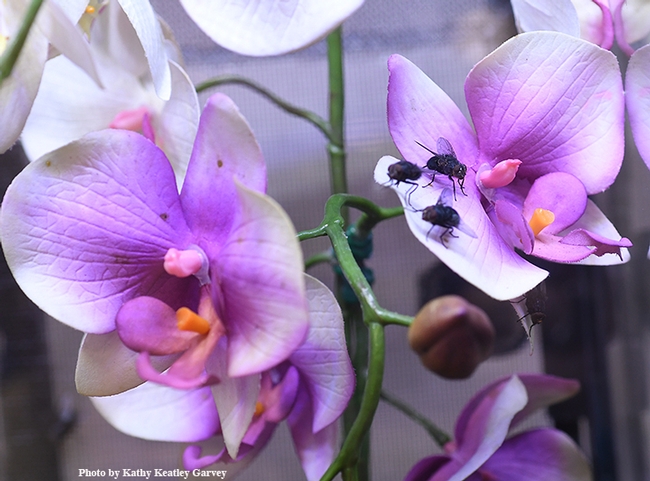
What's in this exhibit in the Bohart Museum of Entomology? Blow flies. A praying mantis didn't eat all the leftovers from a maggot art activity. (Photo by Kathy Keatley Garvey)
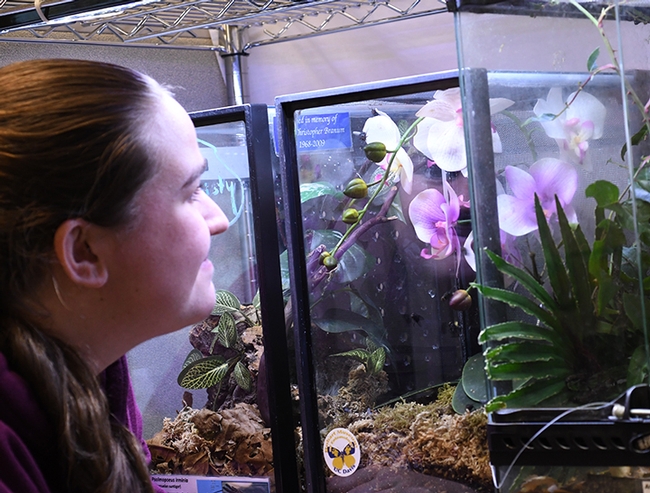
Bohart Museum associate Emma Cluff checks out the blow flies moving around in the praying mantis exhibit. (Photo by Kathy Keatley Garvey)
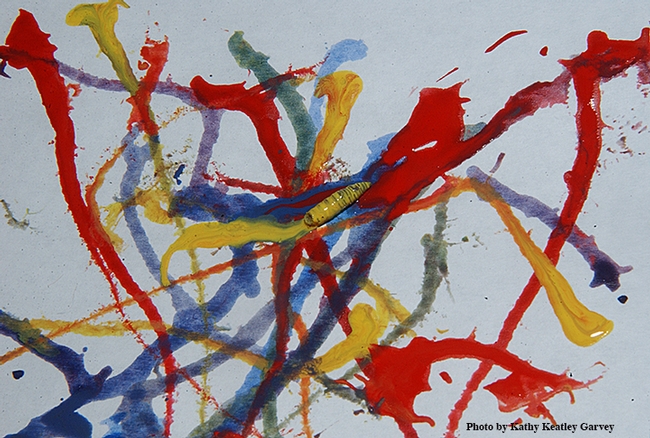
An example of maggot art. Visitors to Briggs Hall can create maggot art during the 105th annual UC Davis Picnic Day. (Photo by Kathy Keatley Garvey)